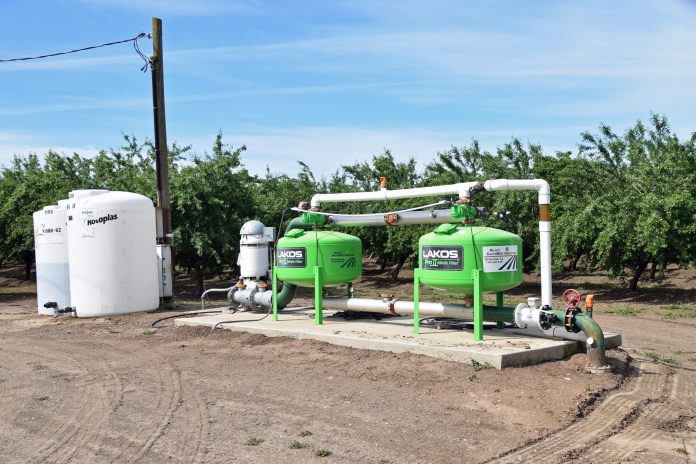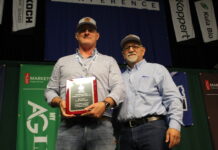
In the last 10 or more years, water quality regulations that address nitrate in groundwater have expanded dramatically. Starting in 2012, the regulatory agencies charged with protecting California’s water quality have increased their scrutiny of and demands on agriculture. So, it is essential for crop consultants to understand the regulations and how regulations affect their customers.
Regulatory History
The challenges associated with nitrate in groundwater and its sources have been recognized for at least a generation. In 1987, the California State Legislature directed the State Water Resources Control Board to prepare a report on nitrate contamination in drinking water. The convened expert panel reported that agriculture was likely an important contributor to nitrate in groundwater.
In 2012, however, the regulatory landscape changed dramatically. First, a major study of nitrate in California drinking water was published by UC Davis. This sprawling effort, titled Addressing Nitrate in California’s Drinking Water, focused on the Tulare Lake Basin and the Salinas Valley. The multi-volume report was produced by the UC Davis Center for Watershed Sciences. It showed that nitrate problems would likely worsen for the next several decades and that most nitrate currently in drinking water wells was applied to the surface decades earlier. An important conclusion of the report was that agricultural fertilizers and animal wastes applied to cropland are by far the largest regional sources of nitrate in groundwater. Thus, in the last decade, the State and Regional Water Boards have been more assertive in regulating agricultural contributions to groundwater nitrate.
The Central Valley Irrigated Lands Regulatory Program (ILRP) started in the first part of this century with a focus on pesticides in surface water. That focus expanded in 2012 when the ‘Waste Discharge Requirements for the Eastern San Joaquin River Watershed (ESJ) General Order’ was first adopted by the Central Valley Regional Water Quality Control Board (CVRWQCB). This order required grower reporting of nitrogen fertilizer applied to cropland and estimates of the nitrogen removed with harvested crops, so the efficiency of nitrogen fertilizer use could be calculated. Growers record this information in their Nitrogen Management Plans (NMPs) as specified by the CVRWQCB. The reporting of NMP data was carried out through the ESJ Water Quality Coalition, a grower-led intermediary that anonymized the data and provided statistical analysis on a township basis. A component of the statistical analysis is identification of outlier values (i.e., parcels where the nitrogen efficiency is low relative to others in township.) These outlier growers are then targeted for outreach and increasing reporting requirements. Growers in all regions of the Central Valley are represented by coalitions. Nitrogen reporting requirements are now in place for all Central Valley regions and crops with the exception of rice.
In 2018, the State Water Board stepped into the picture and revised the ESJ Order to include new provisions to be precedential to all regional boards. The precedents adopted include reporting of nitrogen application (A) to and removal (R) from cropland, reporting of irrigation water used, testing on-farm domestic wells for nitrate and reporting nitrate exceedances to the well users. With these new requirements, the NMPs became the Irrigation and Nitrogen Management Plans (INMPs). The regional boards were directed to use both A/R and A-R (the nitrogen efficiency ratio and the total excess nitrogen, respectively) to evaluate compliance. All regional boards are required to adopt these precedents into orders by February 2023. The CVRWQCB updated its ILRP orders in 2019.
Another major nitrate-related regulatory effort in the Central Valley is the Central Valley Salinity Alternatives for Long-Term Sustainability (CV-SALTS). This is a multi-stakeholder effort that seeks to manage the long-term loading of salts in the Central Valley. Of interest here is the focus on nitrate. The CVRWQCB adopted the regulations proposed by the CV-SALTS stakeholders in 2018. The goals of CV-SALTS regulations are “1) to ensure a safe drinking water supply; 2) to achieve balanced salt and nitrate loadings; and 3) to implement long-term and managed aquifer restoration programs where reasonable, feasible and practicable.”
While the CV-SALTS process affects all discharges in the Central Valley, each of the above goals represent challenges to growers in terms of costs of compliance and improving nitrogen fertilizer management. Fortunately for growers, the administration of regulatory requirements is handled by the coalitions that were established for the ILRP.
Looking again at 2012, the Central Coast Regional Water Quality Control Board (CCRWQCB) adopted its first order to require reporting of nitrogen applications. This information was reported directly to the Regional Water Board. Just this year, the CCRWQCB adopted the updated “Ag Order 4.0,” incorporating the ESJ precedents and setting long-term limits on excess nitrogen applied to crops. Farming operations must now submit information on nitrogen applied to and removed from cropland. The order includes a schedule of targets for excess nitrogen fertilizer roughly defined as A-R. After 2026, specific excess nitrogen targets are in place for all crops. Those targets rachet down from 300 lbs/ac in 2026 to just 50 lbs/ac in 2050. For reference, the CCRWQCB estimates that currently only approximately 6% of the acres of high-value crops meet the 2050 benchmark.
The situation in the Central Valley is different than in the Central Coast. The Central Valley coalitions have developed a methodology to determine what those targets should be on a township basis. The methodology, a sophisticated modelling effort for the entire Central Valley, has been approved by the CVRWQCB Executive Officer and is scheduled to produce target excess nitrogen values in 2023.

The Crop Adviser’s Role
California Certified Crop Advisers (CCAs) are an integral part of the nitrogen management compliance picture. The CVRWQCB determined that CCAs who received special training in nitrogen management are qualified to certify growers’ INMPs. There are now nearly 900 CCAs eligible to certify INMPs.
For several years, CCAs became eligible to certify Central Valley growers’ NMPs through training received via a day-and-a-half in-person conference given once a year and presented by UC faculty. Funded by the CDFA Fertilizer Research and Education Program (FREP), this successfully certified nearly 1,000 CCAs. On October 1, 2020, the certification program changed to a Nitrogen Management Specialty category managed by the International Certified Crop Adviser organization. All CCAs who had the nitrogen management certification were “grandfathered” into the new Nitrogen Management Specialty category. CCAs who had not yet been certified now must take the Nitrogen Specialty category exam to be qualified to sign INMPs. UC staff developed online training modules to assist CCAs in passing the specialty exam. The training is available to any CCA and provides 16 continuing education units (CEUs) for a cost of $120. More information regarding the online training and the specialty exam can be found at certifiedcropadvisor.org/ca-nsp/. CCAs who have the California Nitrogen Management Specialty (CA-NSP) category must obtain eight CEUs in nutrient management and seven CEUs in soil and water management over two years but are still only required to obtain 40 total CEUs to maintain their certification. There is an additional fee required to maintain the CA-NSP.
CCAs may find that certifying INMPs, especially the irrigation portions of the forms, moves them out of the nutrient management comfort zones. Because we all recognize the importance of irrigation management in nitrogen management, we can also realize that it’s a crucial area for CCAs to step into. Information regarding anticipated crop evapotranspiration (ETc) and irrigation water to be applied is required in the INMPs.
Instructions provided with the plans suggest that the UC or coalition may provide the information to complete the ETc question, but the data are not readily available. To resolve the conflicts involving ETc determination, a statewide project was funded to create an accepted clearinghouse of coefficient values for the major crops in California. The project is nearing completion and should go a long way to helping CCAs provide accurate answers for the ETc questions in the INMP. Alternatively, this year, a project involving the National Aeronautics and Space Administration (NASA), the Environmental Defense Fund and a host of other partners will make ETc data available through interactive maps on the web. The project is called OpenET and is set to be released by the end of the year.
FREP is holding its annual conference this year in San Luis Obispo from October 26-28. There will be sessions on OpenET, ILRP water quality coalitions and other nutrient and irrigation management topics. For more information, see cdfa.ca.gov/is/ffldrs/frep/FREPConference.html.
Mark Cady is currently supervisor of the CDFA FREP. His understanding of water quality regulation comes from four years as an environmental scientist with the CVRWQCB. FREP’s role is to fund and facilitate research and education to advance the environmentally safe and agronomically sound use and handling of fertilizing materials. Please visit cdfa.ca.gov/is/ffldrs/frep for more information.


















